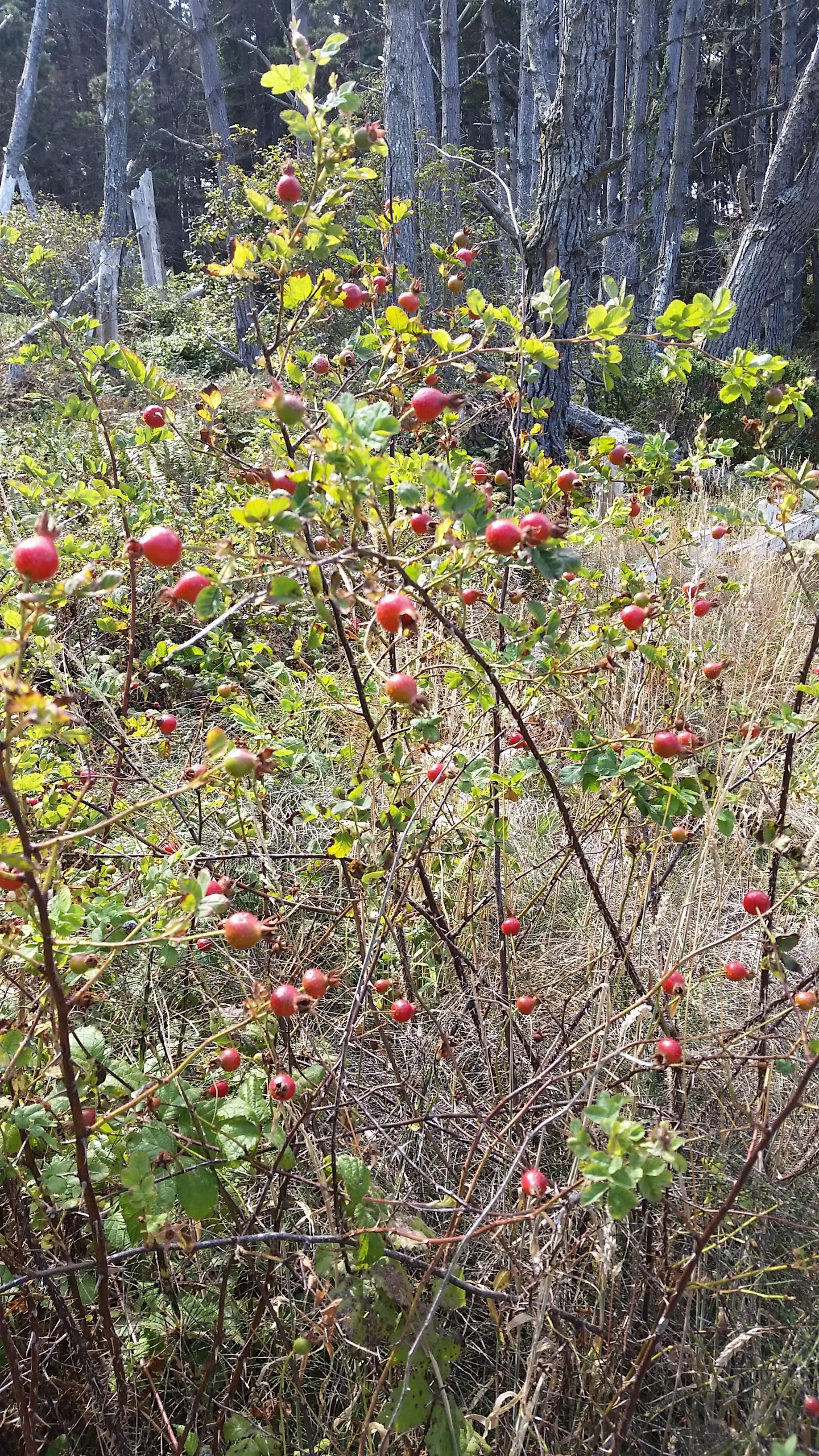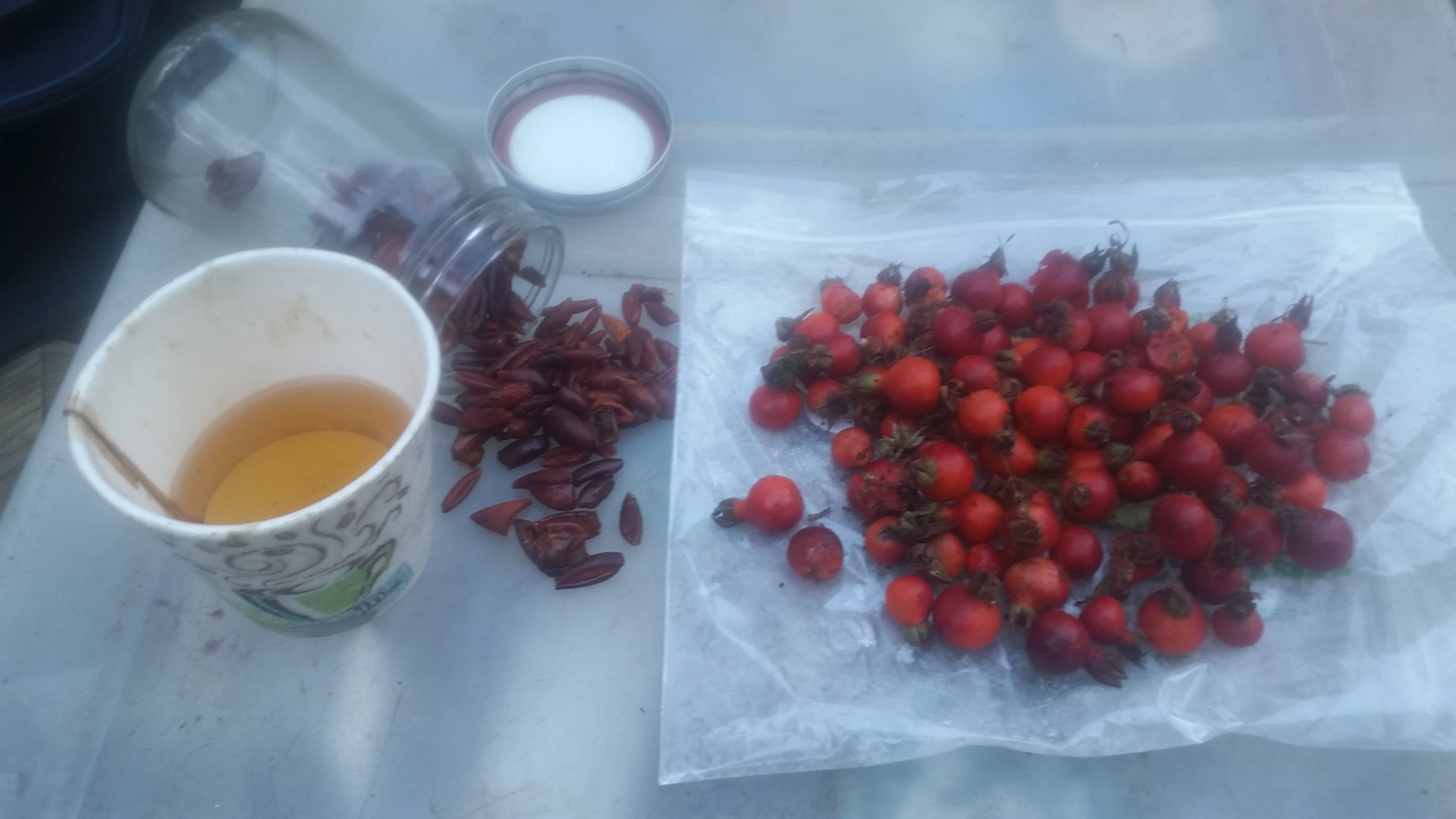The California Wildrose or rosa californica is easy to find along the main roads and back roads of the northern California coast where I am presently camping. The rose hip is the fruit from a rose plant and they are easy to find late summer. Since they tend to stay attached, they are available throughout the fall and winter months as well. The bushes are easy to spot as they are typically covered with bright red fruits also indicating it is time to harvest. Remove both end tips and cut them in half, remove the seeds and the fuzzy insides surrounding the seeds and place them in the sun until they are dried. Before drying them you can also eat them raw. They sort of resemble the taste of apple skins with a bit more texture and thickness. I've also added them as an ingredient when cooking dried pinto beans. They add a bit of sweet flavor and since they are very high in vitamin C they add some additional nutrients to your recipe.
Rose Hip Tea
Pour 16 to 32 ounces of boiling water to a small handful of dried rose hips. Steep for about 5 to 10 minutes and you have a delicately flavored brew that you can enjoy hot, lukewarm or cold, that is super high in vitamin C. I've tried adding lemon or lime and even a bit of pineapple juice for additional flavor, but I've come to appreciate the taste of this tea sans additives.
So when you spot these on a hike, generally along a fence near the roadside pick a few and try them out. I've heard they make pretty good soups as well, but have yet to try a recipe myself.
So far I've been sticking to the easy to identify plants, but be careful because there are look alike plants to many of the wild edibles that can kill you or make you very sick. I've spent countless hours studying guides that I've either purchased or checked out at the library. Take your time and be very cautious when foraging and be positive in your identification before you try any wild plant. My goal with this blog is to let you know what I'm doing while I'm in the wild and foraging is a fascinating hobby that can add to ones outdoor enjoyment. Be very cautious and if you are not absolutely sure of the identity of a plant or mushroom don't eat it. Try to get a verification from another person that has strong familiarity to wild plants if you are not sure. Many plants like the huckleberry, blackberry and rose hip that I've blogged about so far are easy to identify and don't have any dangerous look alike plants to worry about.
So have fun, but be safe. Learning about the plants around you definitely adds enjoyment to ones hikes and adds powerful nutrition to ones diet and best of all, its free!


